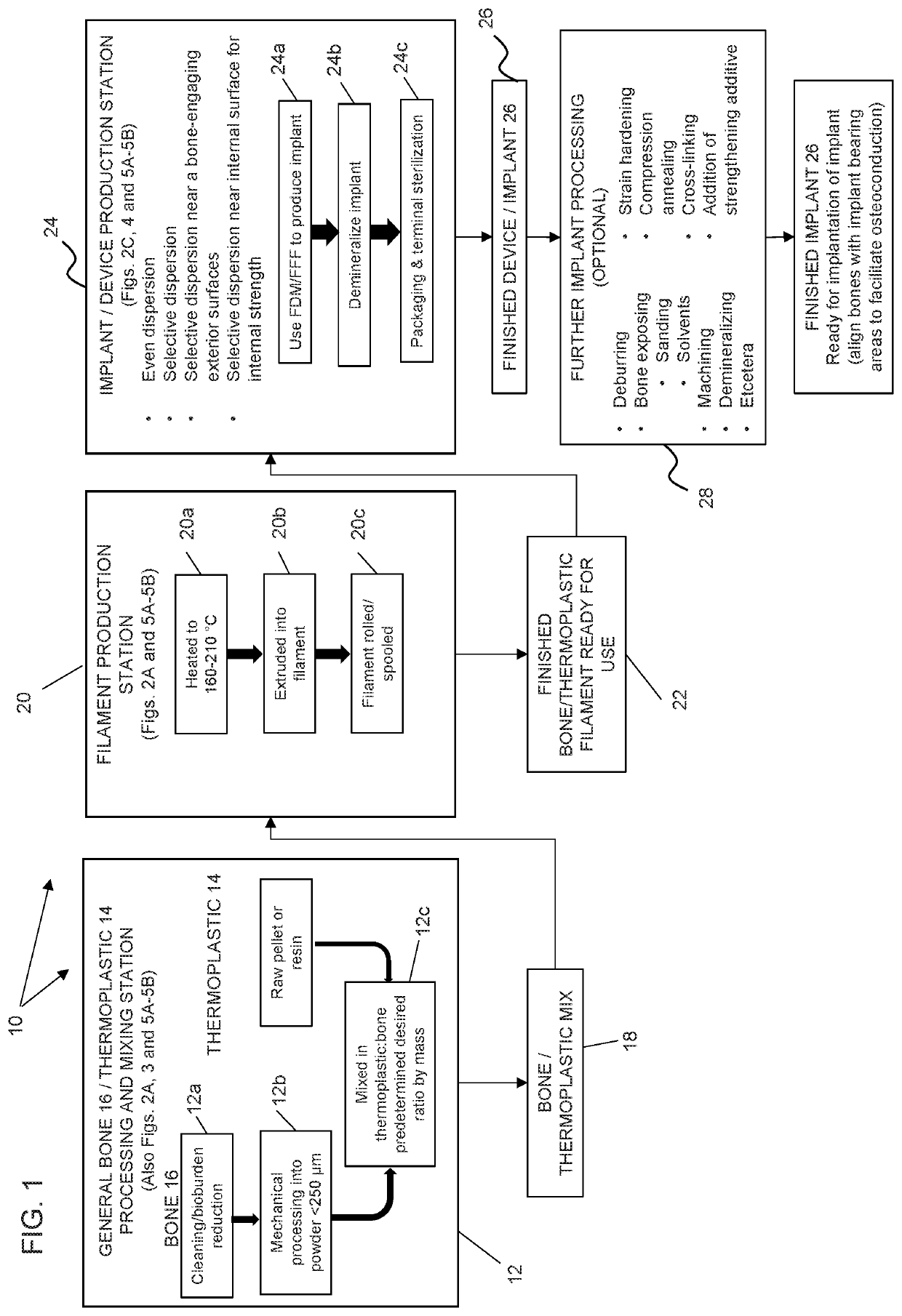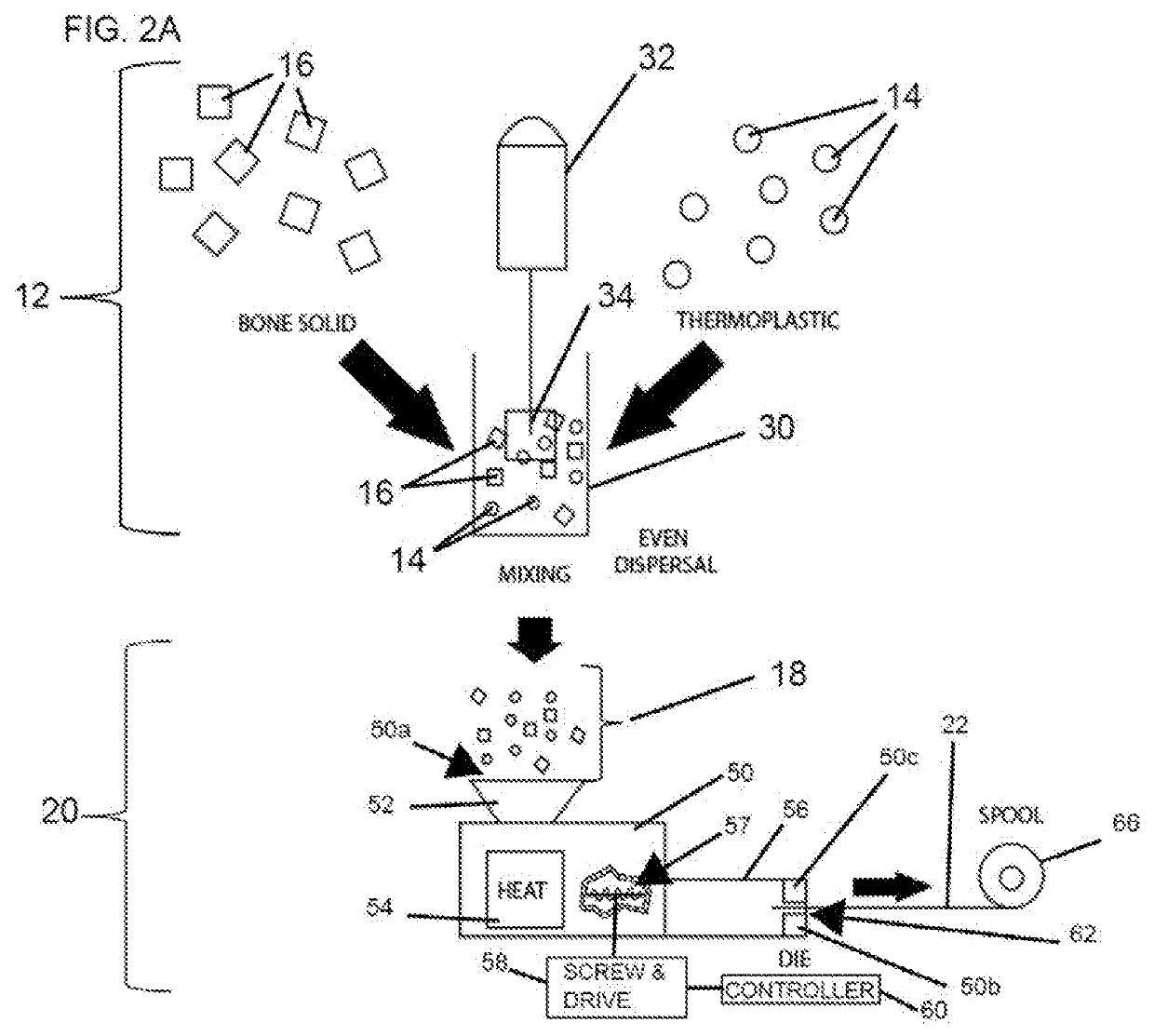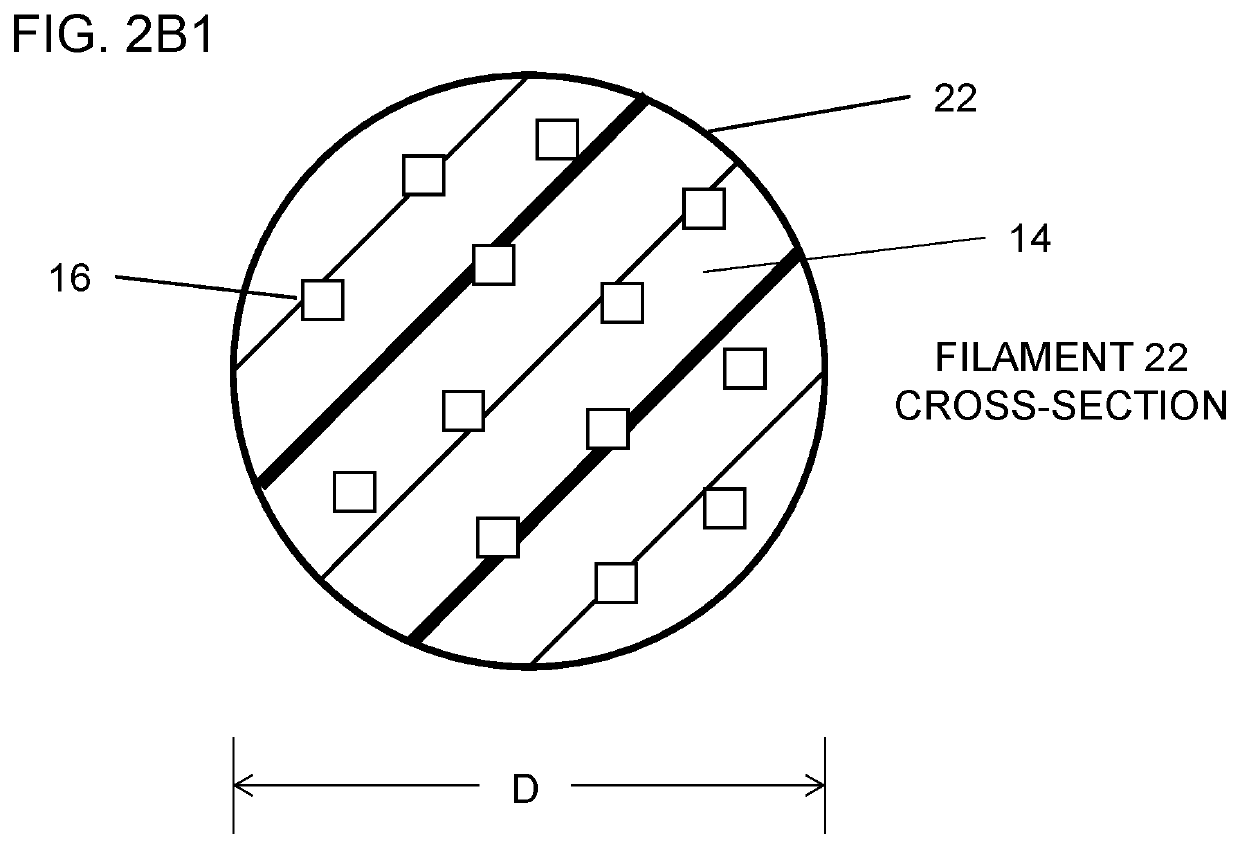Bone-derived thermoplastic filament and method of manufacture
- Summary
- Abstract
- Description
- Claims
- Application Information
AI Technical Summary
Benefits of technology
Problems solved by technology
Method used
Image
Examples
Embodiment Construction
[0173]Referring now to FIGS. 1-8D, a system 10, device, implant and processes for generating or creating a bone-derived thermoplastic and bone mixture that is adapted and processed to create a filament that is subsequently used to produce a device, such as an implant, is shown and will now be described. For ease of understanding, the system 10 will be described relative to FIGS. 1-4, with associated processes being described relative to FIGS. 5A-5B. The implant is described in detail relative to the examples in FIGS. 6A-8D.
[0174]As best illustrated in FIG. 1, the system 10 comprises at least one or a plurality of stations for processing bone 16 and thermoplastic 14 together and, ultimately, to form a device / implant 26. A first station 12 includes a bone / thermoplastic processing and mixing station 12 for processing and / or mixing a thermoplastic 14 and bone 16 together. In general, the processing and mixing station 12 comprises multiple processes applied to the bone 16 to ensure prope...
PUM
| Property | Measurement | Unit |
|---|---|---|
| Fraction | aaaaa | aaaaa |
| Fraction | aaaaa | aaaaa |
| Percent by mass | aaaaa | aaaaa |
Abstract
Description
Claims
Application Information
 Login to View More
Login to View More - R&D
- Intellectual Property
- Life Sciences
- Materials
- Tech Scout
- Unparalleled Data Quality
- Higher Quality Content
- 60% Fewer Hallucinations
Browse by: Latest US Patents, China's latest patents, Technical Efficacy Thesaurus, Application Domain, Technology Topic, Popular Technical Reports.
© 2025 PatSnap. All rights reserved.Legal|Privacy policy|Modern Slavery Act Transparency Statement|Sitemap|About US| Contact US: help@patsnap.com



